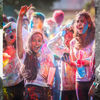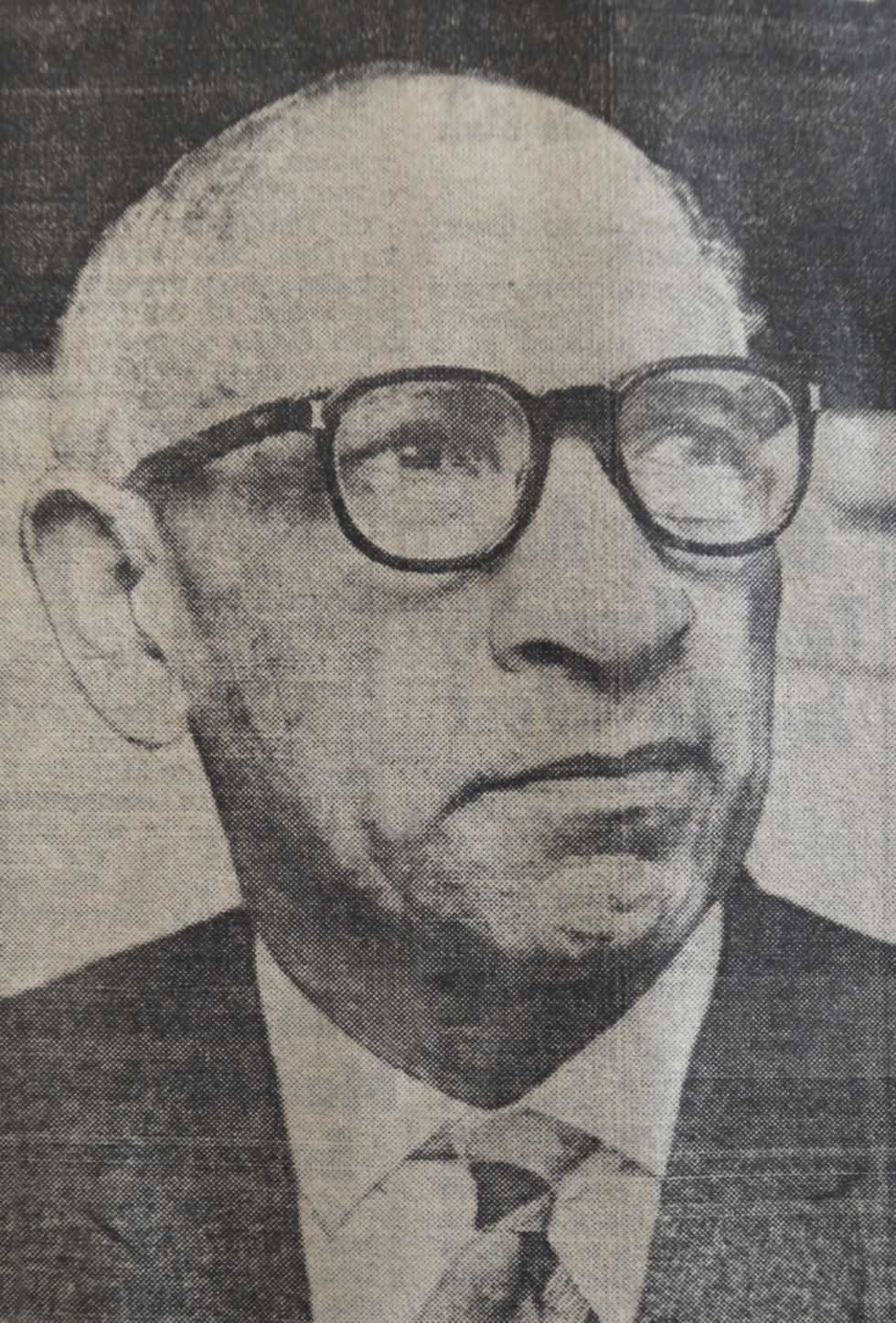Ambition and Education – Medical Students from India in the 1910s
- woventogetherdundee

- Oct 5, 2022
- 7 min read
Updated: Aug 13, 2024
“At present the question is whether medical education is to be part of the future ambition of Dundee… now I not only think Dundee justified in entertaining this ambition, but I think she is bound to entertain it.” – Principal William Peterson, University College Dundee, 1885
Dundee’s Medical School has indeed been fulfilling the ambitions and hopes of those who founded it and has welcomed students not only from Britain but from across the globe. The School began to develop with the founding of Chairs of Anatomy and Physiology at University College Dundee (UCD) in 1888-89 and a Faculty of Medicine was established in 1897, the same year that UCD became part of the University of St Andrews. Known as the Conjoint Medical School, students could do their pre-clinical training in either Dundee or St Andrews, with clinical training taking place in Dundee, mostly at the Royal Infirmary. It would not be until 1904, however, that a purpose-built building was provided for the School on Small’s Wynd, next to the existing Chemistry laboratory.
Before 1910, only a very small number of students came to Dundee from overseas (including Jamaica, New Zealand and South Africa), usually to study Engineering or Science. At that time Medicine was studied by just a handful of British students, but during the 1910s a growing number of students arrived from India, intent on studying Medicine.
Students travelling from India would face a 110-day sea journey and Dundee would greet them as a clanking, thrumming, smelly, densely populated machine. To get to the College and the Students’ Union, they’d have to meander their way through streets of horse-drawn carts and double-decked electrified trams.
The entry of prospective students was discussed in meetings of the Faculty of Medicine. In minutes from a meeting of the Faculty on 10 July 1909, we learn that Mr Bakhshi Kartar Singh had written to the Dean asking to be exempted from the first and second professional examinations as he had already passed the preliminaries. The Faculty accepted his application and he was exempted from re-sitting these exams.

Bakhshi is one the earliest students that we know of from India and was already living in Scotland before he applied to study Medicine in Dundee. He had previously been living at 33 Minto Street in Edinburgh, moving to Dundee soon after posting his letter to the Dean. Before coming to Britain he had lived in Rawalpindi District in Punjab Province and studied at Gordon Mission College in the city of Rawalpindi. In Dundee he lived at 4 Garland Place, renting a room in a flat managed by Jane Andrews. He graduated in 1912.
There were no University-owned halls of residence at that time, so students would live and study in lodging houses and other private properties. The most common type of properties that students could rent were flats. Modern tenements of the turn of the century would consist of two or three rooms with indoor toilet facilities. However in most blocks the toilets were located in the hallway and were shared by all the residents of that floor. Most older flats had outdoor toilets. The wealthier students could afford rooms in detached or semi-detached houses.
Lengthy discussions were had at Faculty meetings about the requirements needed for students to pass and achieve a high quality Bachelor’s degree in Medicine and Surgery (MB, ChB). The subjects they were required to pass were Physiology, Medical Jurisprudence, Public Health, Materia Medica (Pharmacology), Pathology, Forensic Medicine and Anatomy. Students were judged on written, practical and oral examinations. As well as a written test for their final year exams, they were required to demonstrate their clinical and surgical skills. Cadavers were used for the later part of the test. These were held at Dundee Royal Infirmary.
Some of Dundee’s Indian graduates enlisted in the Indian Medical Service (IMS), first as Temporary Lieutenants and some eventually rising to the rank of Colonel. The IMS was primarily a military medical service in British-ruled India to provide the Indian Army with medical officers for duty in time of war. It was amalgamated from three previous medical departments in Bengal, Madras and Bombay. Dundee graduates may have had a connection through Lt Col Lamont of the Anatomy department, who left UCD to return to the IMS during the Great War. In the midst of a turbulent period of history, and with demands growing for Indian independence, three Dundee medical graduates enlisted – Dr Mohkam Chand Madhok, Dr Ram Nath Bhandari and Dr George Verghese.
Mohkam matriculated in 1911 and graduated in absentia in 1915. Back home in Gujranwala (now in Pakistan), Mohkam enlisted with the IMS, gaining a commission as a Temporary Lieutenant in 1917 and being promoted to Temporary Captain a year later. Many years later, at the outbreak of the Second World War, Mohkam was awarded the Venerable Order of the Hospital of St John of Jerusalem as an Associate Serving Brother.
Ram grew up in a medical household in Lahore. He came to Dundee from the Punjabi district of Amritsar. He matriculated in 1912, and while studying for his degree he resided at Lilybank Villa on Lawside Road. In 1915, he moved to Monkeaton in Northumberland but continued his studies and graduated from the University of St Andrews in 1916. Three years later he gained his medical doctorate qualification from St Andrews and enlisted in the IMS, where he was first registered as a Temporary Lieutenant. Four years later, Ram was promoted to the status of Captain.
George matriculated in 1913 and graduated in 1916, two years before his brother, Tharyan, who had joined him in Dundee. He had previously been educated at the Christian College in Chennai, what was then Madras and in Orissa, Cuttack. He rented a room on Lochee Road, living at a house called Tollbank. By 1941 George was Director of Health and Inspector General of Prisons in Cuttack, India. He was listed in King George VI’s Birthday Honours and was awarded the Order of the Indian Empire. He was then a Lieutenant Colonel in the IMS.
Not every student returned to India. Others, like Dr Mohan Lal Bery and Dr Tharyan Verghese, decided to stay living in Britain to further their studies and careers.
Mohan was educated at the Government College in Lahore and came to Dundee in 1912. In July 1915, with war in Europe raging, he attended the “much quieter than usual” graduation ceremony. In 1915 he moved to Lincoln, living at 5 Egerton Road and working as an Assistant Police Surgeon. By 1930, he was Residing Medical Officer at the City Hospital and at Dawber Sanitorium and a year later he became the Medical Officer of Health for the City of Lincoln.
Before coming to Dundee to study, Tharyan studied at the University of Madras in Eastern India. He matriculated in 1915 and throughout his student years he lived in lodging houses - first at 12 Rankine Street (managed by Mrs John Robertson) and then at 11 Lawside Road (managed by David Davidson). In 1918, two years after his brother George graduated with medical Bachelor’s, Tharyan graduated with his Bachelor’s in Medicine. Tharyan completed further studies at UCD, becoming a medical doctor in 1929 with a thesis titled “Investigation of Streptococci with a view to the co-relation of certain characters exhibited by strains of that micro-organism.”

The later careers of some students are unknown, though they presumably returned home to India. Mr Panna Lal Gupta matriculated in 1911, having acquired his first-year qualification in medicine at the Lahore Medical School. For at least part of his four years in Dundee he resided at 8a Aberlemno Terrace off Perth Road. After two years he sat his final exams for the Fourth Professional Exam but did not achieve the passing marks. Frustratingly he once again failed to pass six months later. After another six months, however, the Faculty passed Panna and he graduated in 1915.
Mr Puthoor Varinghese Paul came from Travancore in southern India where he had studied at Trivandrum College. Before coming to Dundee in 1913, he had spent the first year of his Bachelor’s in Medicine and Surgery at Edinburgh University learning Chemistry and Zoology. He first lived at Tollbank House on Lochee Road (where George Verghese also lived), then moved to 12 Rankine Street (home of George’s brother Tharyan) and in his final year he resided at 24 Garland Place, close to Dundee Royal Infirmary. After failing to pass his final exam, and like Panna failing again second time, Puthoor passed on his third attempt and graduated in late 1916.
These are all of the medical students we know of that came to Dundee from India in the 1910s, but there may have been more. We would love to hear any further information anyone can shed on their lives and later careers.
Written by Johanna Steele
Sources:
Civil & Military Gazette (Lahore) 3 October 1917
Norman Watson, Dundee Royal Infirmary 1798-1998 (1998)
Dundee Social Union Report 1905: Report of Investigation into Social Conditions in Dundee (John Leng & Co, 1905)
Edinburgh Evening News 3 July 1913, 8 October 1913
www.genuki.org.uk/big/eng/lin/Lincoln
J S G Blair, History of Medicine in St Andrews University (Scottish Academic Press, 1987)
Lincolnshire Echo 10 January 1923, 30 June 1931, 11 November 1931, 11 October 1933, 27 December 1933, 9 April 1934, 24 December 1937, 3 May 1939
Minutes of Faculty of Medicine 1909-1913 & 1913-1919 (University of Dundee Archives, RU 676/1)
Kenneth Baxter, ‘University College, Dundee and the Great War’, in B Kenefick & D Patrick (eds) Tayside at War (Abertay Historical Society, 2018)
www.ncbi.nlm.nih.gov – Indian Journal of Community Medicine
St Andrews Citizen 4 July 1914, 2 January 1915, 23 January 1915, 3 July 1915, 22 January 1916, 14 October 1916, 21 October 1916, April 1916, 14 July 1923, 24 October 1931
Supplement to the British Medical Journal 13 September 1924
Dundee Courier 28 March 1913, 28 June 1913, 1 July 1913, 27 June 1914, 28 December 1914, 18 January 1915, 9 July 1915, 30 March 1923, 3 July 1923
London Gazette 30 May 1919, 20 July 1920, 23 June 1939
The Scotsman 1 April 1912, 28 March 1913, 8 October 1913, 31 December 1913, 27 June 1914, 2 January 1915, 23 June 1915, 9 October 1916, 21 January 1919, 12 June 1941
University of St Andrews, Students of University College Dundee and Medical School 1897 – 1947
University College Dundee Matriculation Registers (University of Dundee Archives)




Comments